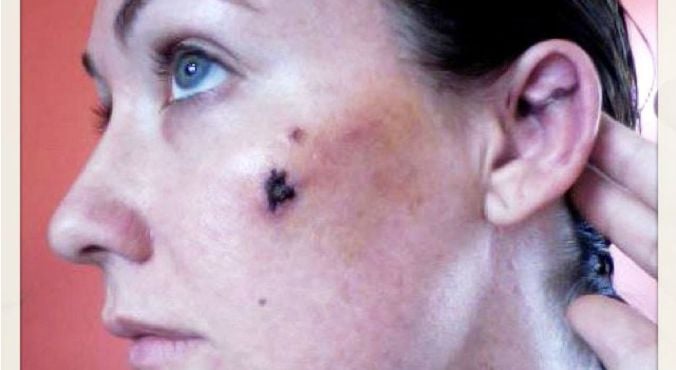
Image via Kara Burns/ABC.
Ever taken a selfie of a skin rash, wound, or mole? Or a video of a wheezing episode or muscle twitch so you could discuss it with your doctor? If so, you’re part of a growing movement that’s revolutionising the way health care is practised.
And both patients and doctors can benefit from this “medical selfie” trend, Queensland University of Technology PhD researcher Kara Burns said.
Just like that annoying noise in your car engine that disappears as soon as you take it to the mechanic, plenty of medical problems are transient or hard to demonstrate in the doctor’s surgery, former medical photographer Ms Burns said.
RELATED: This app is the medical world’s secret (gory) Instagram
She said your photographic evidence could provide your doctor with vital information they might otherwise miss.
Ms Burns specifically cites the recent case of Canadian woman Stacey Yepes, who used her mobile phone to capture an episode of symptoms that included slurred speech and facial paralysis, which ultimately lead to a diagnosis of a stroke.
The thing is, she had already seen her doctor about an earlier experience with similar symptoms, but they had not been able to confirm the diagnosis with testing. In this case, the medical selfie led to an accurate diagnosis that could well have saved a life, Ms Burns said.
(However, you probably want to call an ambulance and not take a selfie if you think you are having a stroke.)
RELATED: Doctors tell all: The 8 most ridiculous patient self-diagnoses of all time
Indeed, new research conducted in the United Kingdom found patient photos produced information that was highly relevant to GP consultations and “empowered patients by illustrating their narratives”, Ms Burns said.




























































































